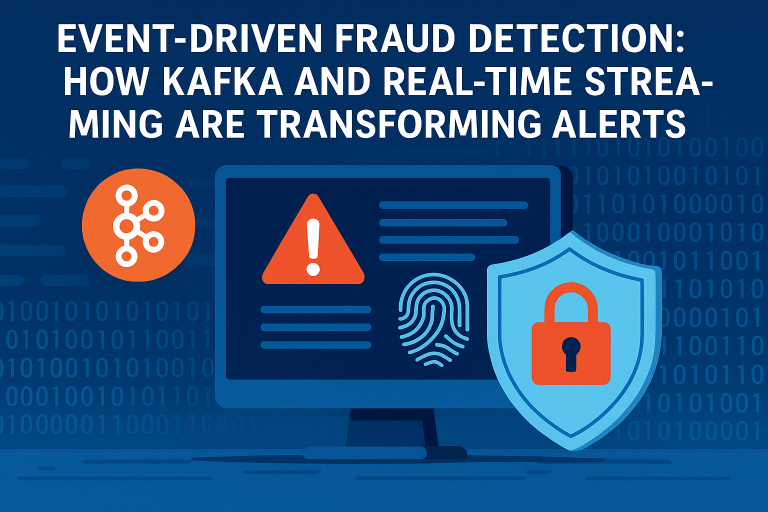FedNow fraud detection demands sub-second decisioning, multi-signal models, and analyst-ready workflows—without adding friction for good customers.
Why FedNow Changes the Fraud Game
FedNow is a 24/7/365 instant-payment rail with immediate settlement. There’s virtually no pause window for after-the-fact intervention. The Federal Reserve provides rail-level levers—participant/network limits, negative lists, and fraud reporting—outlined here: FedNow basics and Fraud at a Glance (PDF).
In 2025, FRFS announced risk-mitigation updates (e.g., segmentable account-activity thresholds) and raised the FedNow transaction limit to $1,000,000, with later signaling toward higher-value ceilings: FRFS press release, Fed360 article, Fed360 update. Check current volumes here: FedNow Quarterly Statistics.
Regulators are also engaged. On June 16, 2025, U.S. agencies issued an RFI on potential actions to mitigate payments fraud: Fed press release, RFI PDF. Program governance should align with the latest FedNow Operating Procedures (PDF) and Operating Circular 8.
System Design: Real-Time Architecture for FedNow Fraud Detection
Objective: sub-second risk decisions with strong recall and low false positives.
- Streaming ingestion: Kafka/Flink/Pulsar streams for txn events, device/session signals, counterparty info. Reference architectures: Confluent whitepaper, Confluent use case.
- Low-latency feature store: in-memory/SSD lookup for hot features (rolling counts, name-match flags, graph degree).
- Scoring tier: rules (hard stops), ML model (probability), behavioral & graph signals, and a meta-decision layer.
- Decision & action: allow/deny/manual; write outcomes; optionally trigger FedNow reporting early for confirmed fraud.
- Feedback loop: analyst decisions and post-event labels stream back into training sets; monitor drift.
Latency budget (targets): features <20 ms, model inference <15 ms, decision & orchestration <5 ms; end-to-end visible <100–300 ms.
Feature Engineering: Signals That Move the Needle
Below are concrete signals and how to compute them for FedNow fraud detection. Adjust windows and thresholds to your risk appetite and segment.
Velocity & burst patterns (SQL)
<!-- Rolling sends by account over short/long windows (PostgreSQL pattern) -->
<pre><code class="language-sql">
WITH tx AS (
SELECT
txn_id,
payer_acct_id,
payee_acct_id,
amount,
ts::timestamp AS ts
FROM fednow_txn_stream
WHERE ts > now() - interval '7 days'
),
win AS (
SELECT
txn_id,
payer_acct_id,
amount,
ts,
COUNT(*) OVER (PARTITION BY payer_acct_id ORDER BY ts
RANGE BETWEEN INTERVAL '5 minutes' PRECEDING AND CURRENT ROW) AS cnt_5m,
SUM(amount) OVER (PARTITION BY payer_acct_id ORDER BY ts
RANGE BETWEEN INTERVAL '1 hour' PRECEDING AND CURRENT ROW) AS sum_1h,
COUNT(*) OVER (PARTITION BY payer_acct_id ORDER BY ts
RANGE BETWEEN INTERVAL '1 day' PRECEDING AND CURRENT ROW) AS cnt_1d
FROM tx
)
SELECT *, (cnt_5m >= 3 AND sum_1h > 20000) AS burst_flag
FROM win;
</code></pre>Name-mismatch & beneficiary resolution (SQL)
<!-- Basic Levenshtein mismatch for payer-provided name vs. directory/known name -->
<pre><code class="language-sql">
SELECT
t.txn_id,
t.payee_name_input,
d.legal_name AS payee_name_dir,
levenshtein(lower(t.payee_name_input), lower(d.legal_name)) AS name_dist,
(levenshtein(lower(t.payee_name_input), lower(d.legal_name)) >= 5) AS name_mismatch_flag
FROM fednow_txn_stream t
LEFT JOIN directory_accounts d
ON t.payee_routing = d.routing
AND t.payee_account = d.account;
</code></pre>Session/behavioral anomalies (Python)
<!-- Lightweight example to compute session risk from UI telemetry -->
<pre><code class="language-python">
def session_risk(telemetry):
# telemetry: dict with 'typing_speed', 'paste_events', 'focus_switches', 'confirm_screen_time'
# Baselines learned per user; here simplified thresholds:
score = 0.0
if telemetry['paste_events'] >= 2: score += 0.3 # copy/paste of payee/account fields
if telemetry['focus_switches'] >= 6: score += 0.25 # window/app switching during payment
if telemetry['confirm_screen_time'] < 1.0: score += 0.2 # skipped reading confirmations
if telemetry['typing_speed'] > 1.8 * telemetry['user_typing_baseline']: score += 0.25
return min(score, 1.0)
</code></pre>Graph / mule-ring context (SQL-ish)
<!-- Approx: degree/triangle counts via precomputed graph tables (updated hourly) -->
<pre><code class="language-sql">
SELECT
g.node_id AS acct_id,
g.degree_out_30d,
g.degree_in_30d,
g.triangle_count_30d,
(g.degree_out_30d >= 8 AND g.triangle_count_30d >= 4) AS mule_cluster_flag
FROM acct_graph_features_30d g
WHERE g.node_id = :payer_acct_id OR g.node_id = :payee_acct_id;
</code></pre>Why these matter: bursty outflows after onboarding, name mismatches at first-time payees, behavior shifts (copy/paste, skipping warnings), and high-degree graph patterns are repeatedly cited in vendor materials and case studies: Verafin FedNow feature sheet (PDF), Wire Fraud feature (PDF), BioCatch case study.
Modeling & Ensemble Strategy (with code)
Combine signals in a layered way so you can meet both latency and explainability goals.
Meta-decision with rules + ML + behavior (Python)
<pre><code class="language-python">
def meta_decision(features):
# features contains: rule_flags, ml_prob, session_risk, graph_flags, name_mismatch, velocity_burst, customer_segment
hard_stop = features['name_mismatch'] and features['first_time_payee']
if hard_stop:
return {'decision': 'deny', 'reason': 'name_mismatch_first_payee'}
score = 0.0
score += 0.55 * features['ml_prob'] # main model
score += 0.20 * features['session_risk'] # behavioral weight
score += 0.15 * (1.0 if features['velocity_burst'] else 0.0)
score += 0.10 * (1.0 if features['graph_flags'] else 0.0)
# segment-aware thresholds
seg = features['customer_segment'] # e.g., 'new_to_bank', 'retail', 'smb'
th_allow, th_manual, th_deny = {
'new_to_bank': (0.15, 0.35, 0.60),
'retail': (0.20, 0.45, 0.70),
'smb': (0.25, 0.50, 0.75)
}[seg]
if score >= th_deny:
return {'decision': 'deny', 'reason': 'score_high'}
elif score >= th_manual:
return {'decision': 'manual', 'reason': 'score_mid'}
elif score >= th_allow:
return {'decision': 'allow', 'reason': 'score_low'}
else:
return {'decision': 'allow', 'reason': 'score_very_low'}
</code></pre>Configuring fallbacks (YAML-ish)
<pre><code class="language-yaml">
latency_budget_ms: 200
timeouts:
feature_lookup_ms: 30
model_inference_ms: 20
fallbacks:
on_model_timeout: "apply_conservative_rules"
on_feature_miss: "deny_if_amount_gt_10000_or_manual"
on_graph_unavailable: "ignore_graph_features_this_request"
logging:
include_features: ["ml_prob","session_risk","name_mismatch","velocity_burst","graph_flags"]
redact_pii: true
</code></pre>Use-Case Patterns (what to look for)
Authorized Push Payment (APP) / Social engineering
- Behavioral divergence mid-session (copy/paste, rapid form completion, minimal confirm-screen time).
- New/first-time payee + name mismatch + unusual corridor or time-of-day.
- Device/network change just before payment; remote-assistance-like patterns.
- Cross-channel signal: suspicious phone call + app session overlap (if available).
Evidence basis and examples: BioCatch Zelle enrollment/payment defenses and case studies: case page, PDF.
Mule rings
- High out-degree nodes; triangle counts; rapid “fan-out” after onboarding.
- Shared devices/IPs across unrelated accounts; synthetic identity traces.
- Counterparty risk derived from external/consortium intelligence.
Verafin materials on FedNow/RTP/wire interdiction & counterparty scoring: Instant Payments solution, Wire brochure (PDF).
Analyst Dashboards & Ops
- Instant-rail risk console: txn_id, decision latency (ms), risk score, decision, reason codes, threshold hits, name-match, behavioral score, counterparty risk, consortium hit.
- Mule cluster view: graph cluster membership, degree/triangles, first-seen payees, corridor anomalies.
- Disagreement panel: surface cases where transactional model says “low” but session/behavior says “high” (or vice-versa).
- Rule-hit & drift watch: alert distribution by rule; feature histograms vs baselines; PSI/KS drift stats.
- Program controls: current FedNow limits by segment; negative-list entries; account-activity thresholds; ISO 20022 fraud reports filed.
Why: maps directly to Fed/FRFS levers and vendor capabilities: FedNow fraud controls, Verafin instant payments (PDF).
Metrics & Monitoring: What “Good” Looks Like
- Decision latency: target <100–300 ms end-to-end (p95); alert if >500 ms.
- Precision/Recall (per segment): new-to-bank vs established; business vs retail. Track lift vs rules-only baseline.
- False positive rate: start <0.5% of flagged volume; tune down with behavior/graph.
- Auto-decision rate: 70–90% with strict caps for high-value sends.
- Drift: PSI > 0.25 or KS p-value < 0.01 triggers review; track per key feature.
- Fraud prevented ($): compare vs pre-FedNow baseline and recent quarters.
Policy & Governance
Keep your program aligned with the latest FRFS guidance and Operating Procedures: FedNow Explorer: Operating Procedures, Operating Procedures (PDF). Follow the multi-agency RFI development: press release, RFI PDF.
Further Reading on EdEconomy
- How U.S. Financial Institutions Are Using AI to Combat Fraud
- Bank Scam Prevention: 2025 Field Guide for Fraud Analysts
- First-Party Fraud in Banking: The Hidden Threat in Plain Sight
- Synthetic Identity Fraud: A Threat to Financial Institutions
- Account Takeover Fraud: Prevention Strategies & Top Tools
For FedNow fraud detection, blend rail-native controls with streaming pipelines, velocity and graph features, behavioral signals, and a clear meta-decision layer. Build feedback loops and drift monitoring so the system stays fast—and accurate—as fraud patterns evolve.








